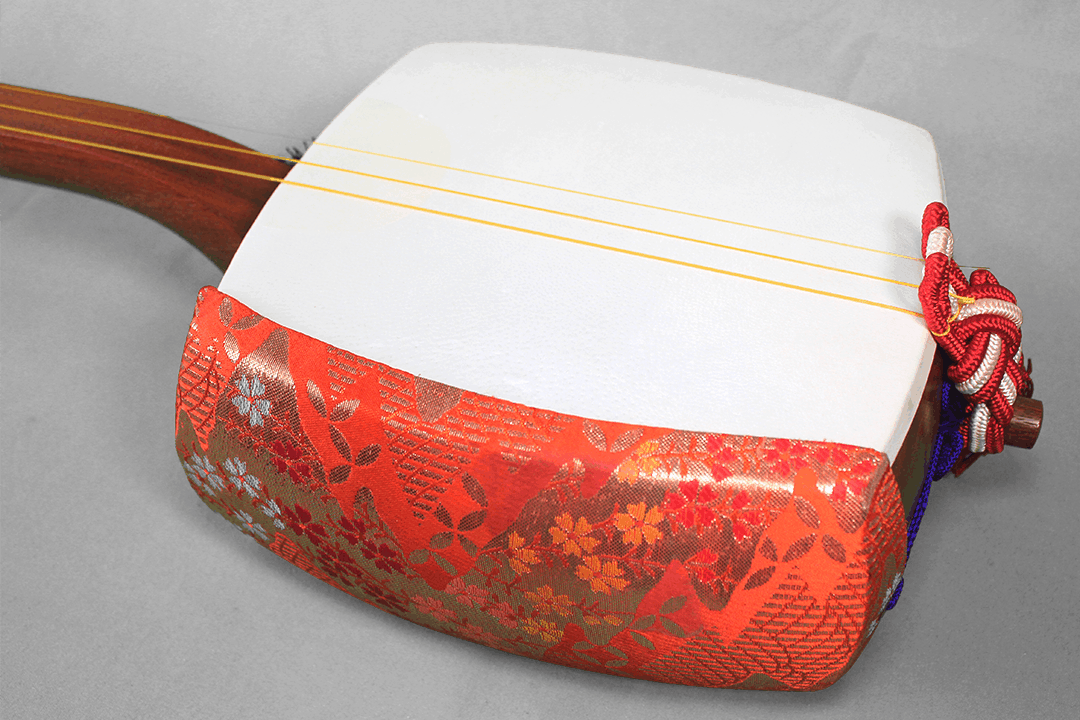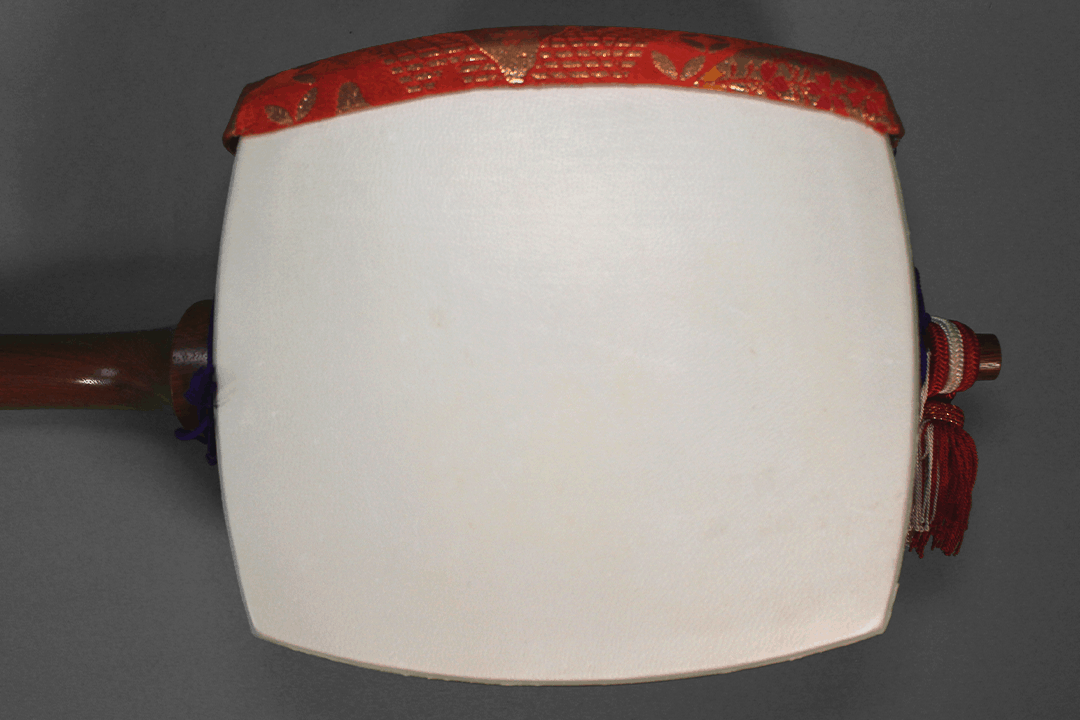Details
Meet beautiful Hiroko! The style of this shamisen is (hosozao), typically used for Nagauta, Kouta and Hauta playing style.
The instrument is made from karin wood – an established choice for beginner instruments. The instrument comes with a fantastic red and white neo with tassles and a gorgeous classic orange doukake with cherry blossoms (sakura). Also included in the package is a set of attached strings. The dou is skinned with natural skins that will wrap you in the authentic and warm sound of shamisen music. The instrument is in fantastic condition and it will be a joy to make music with Hiroko.
If you don’t have one lying around to use, please consider getting a washi bag to protect your shamisen’s skin from humidity.
This neck is 25 mm wide and 28 mm high/thick at the top and widens slightly towards the dou. It has an elegantly slanted hatomune – the part where the neck enters the sound box – which is typical for hosozao shamisen associated with Nagauta style. You can play up to position 19 with this kind of neck.
The tsukigata (the curved end of the tenjin) is in perfect condition, and the instrument’s wood has a beautiful reddish shade and beautiful grain. The neck is crafted in mitsuori style: It can be separated into three parts. This makes travelling with the shamisen very easy – even if you have to get by with light and small luggage.
The itomaki (tuning pegs) are made from ebony wood and are carved in a traditional way that makes them easy to grip despite their slender built.
This instrument is a feast for the eyes and ears alike. If you have any further questions, reach out and send me a message and I’ll be happy to help.
All you need to add to your set to start playing are a koma, a bachi and a yubisuri. Depending on the style you intend to play and your personal preferences, you want to pick a certain kind of koma and bachi. Yubisuri come in different sizes, and I didn’t want to deprive you of the difficult yet fun choice between all the wonderful colors. I also recommend getting an adhesive dougomu or a hizagomu that will prevent the instrument from slipping off your thigh. Depending on your personal needs, you might want to consider getting a fujaku strip to mark the positions along the neck. Alternatively, you can mark positions individually or play without any markings.
If you need help with picking the right additions to this set, don’t hesitate to send a message and we will find the perfect match for you together.

